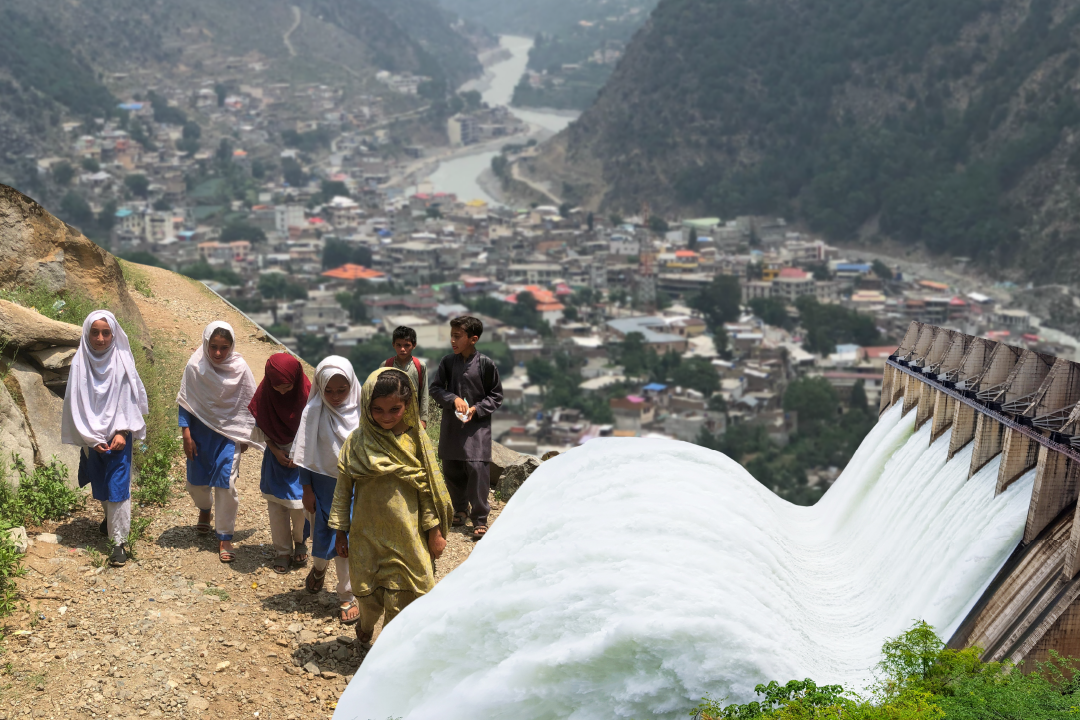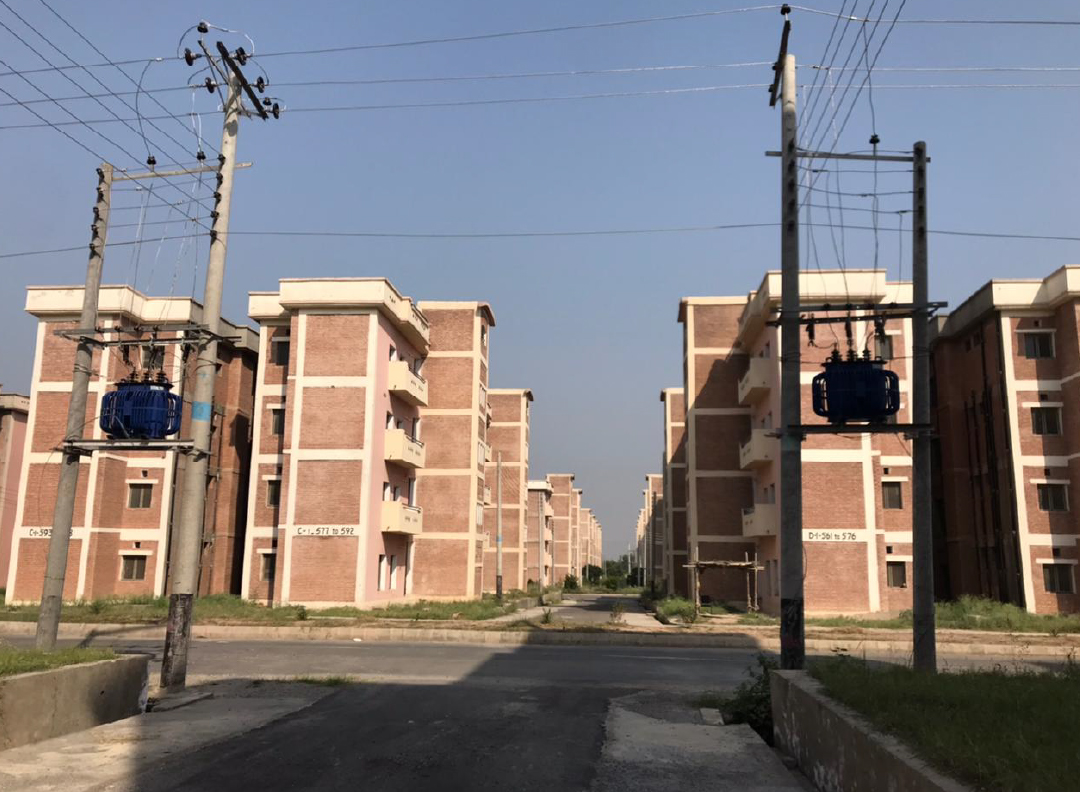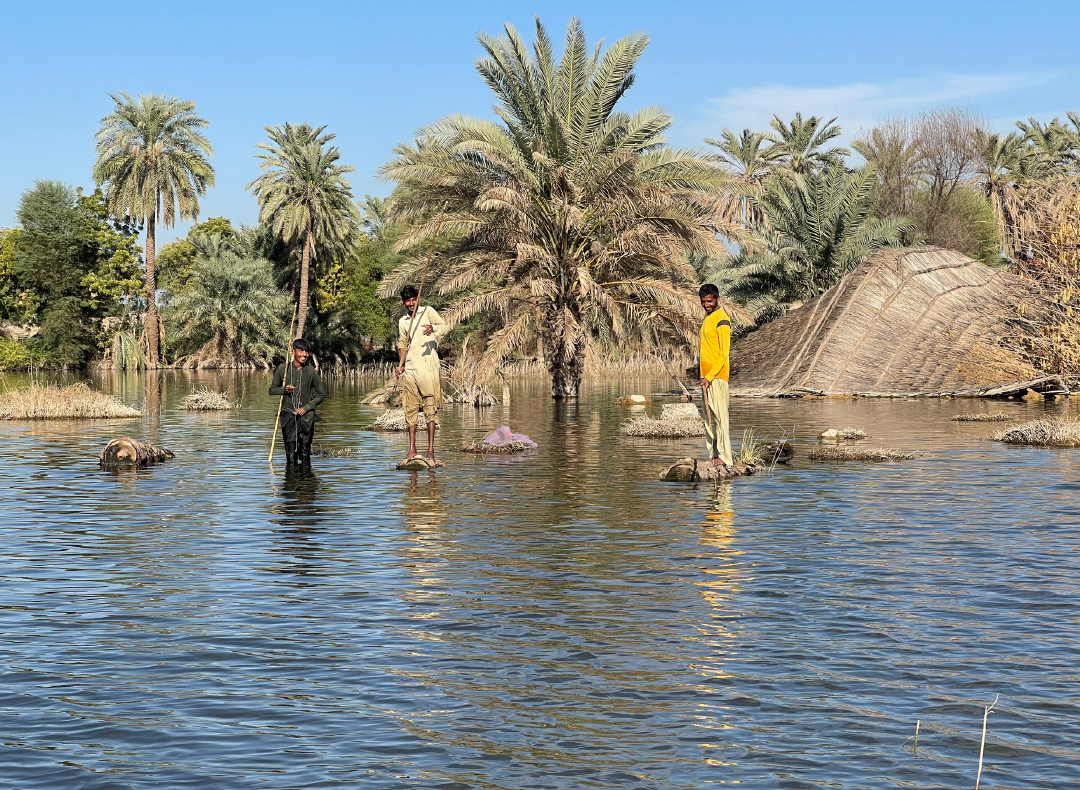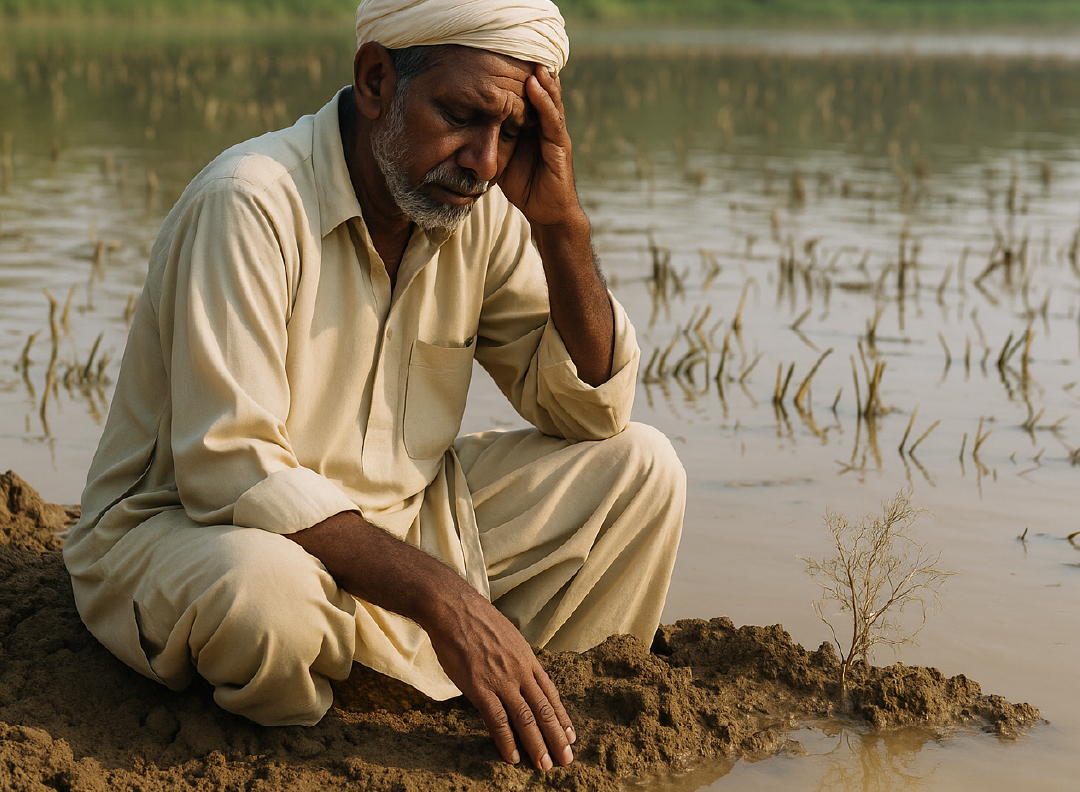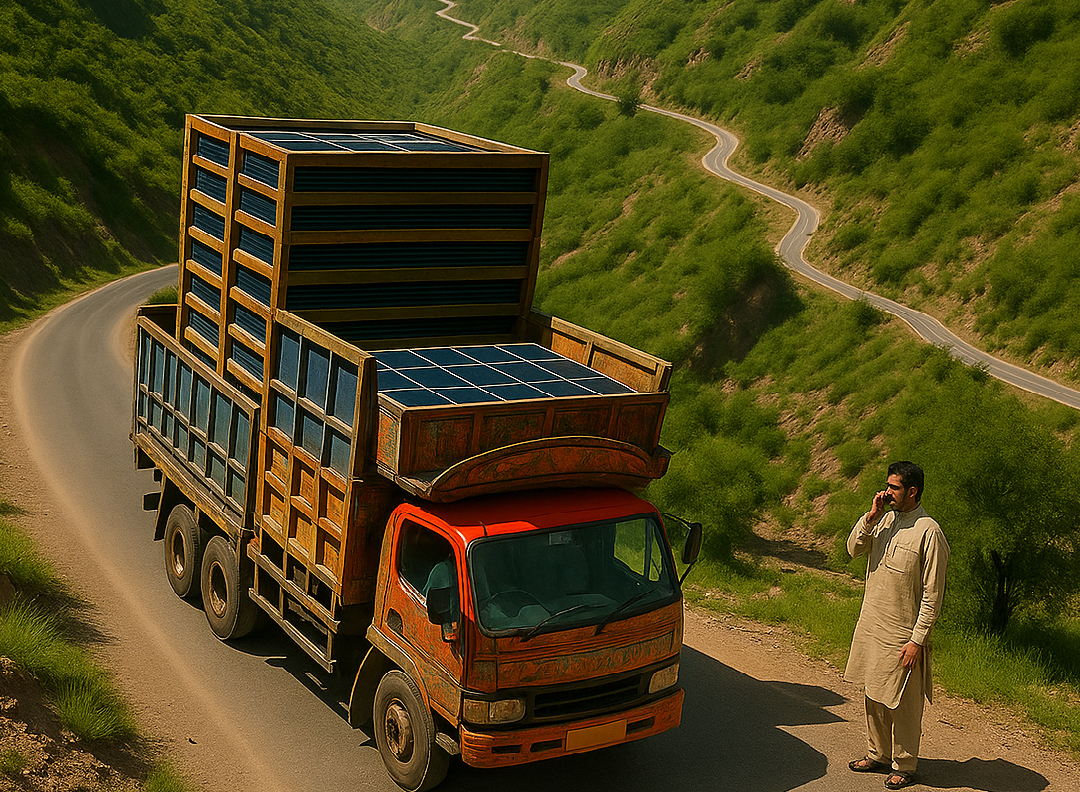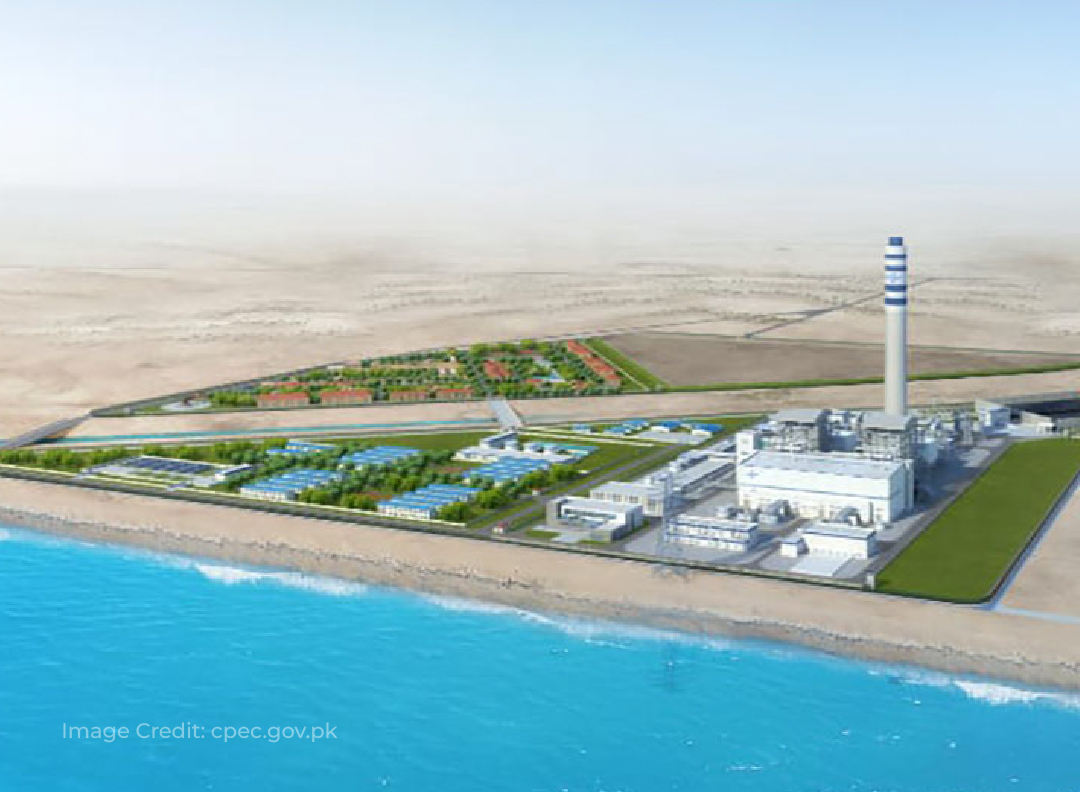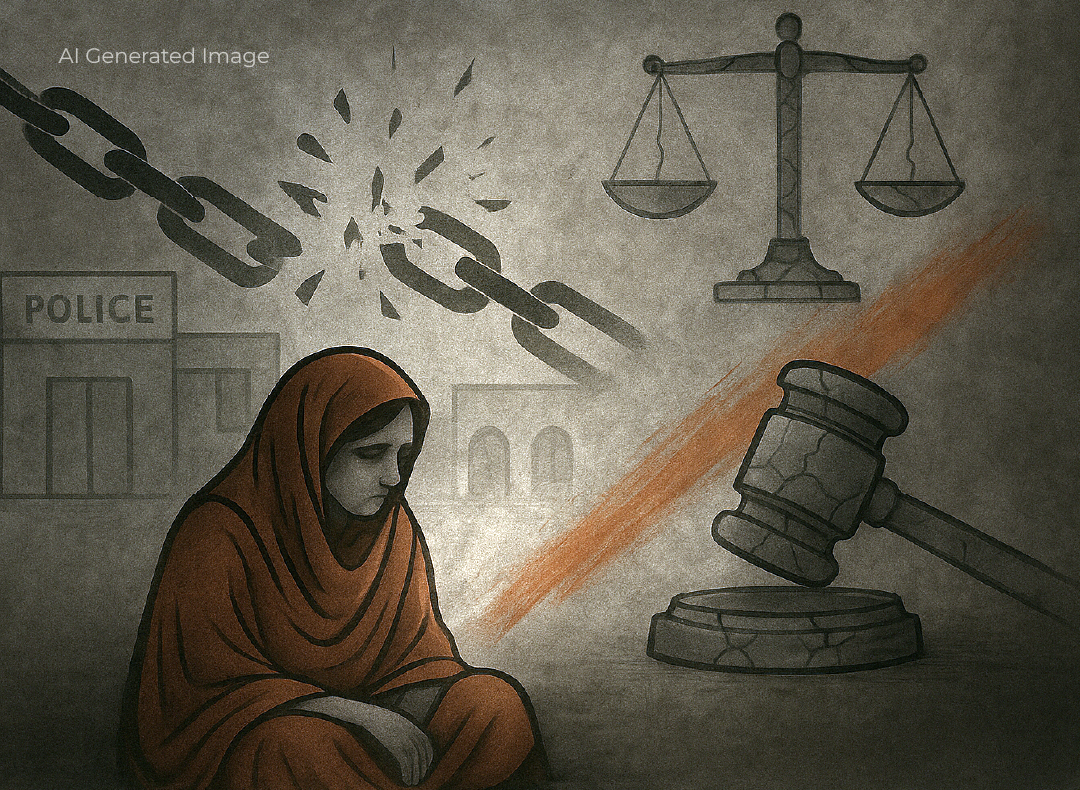Instead of making life of communities easy, the dam takes away their land, water and electricity
Tuti Khan and his friends are chatting on a platform outside a shop while a vast barren land with heaps of stones is visible in the distance. This is Lagan Kar village in Bahrain tehsil of Swat district, located half a kilometer south of the Daral Khwar Hydropower Project, but it does not look like a part of the lush green region of Swat.
Khan points to this desolate scene and says that this area was not always like this in the past as Daral Valley used to have lush fields and green trees. He and his relatives have been cultivating wheat, corn, cucumber, cabbage and other vegetables on this land.
During the summer season, according to him, when vegetables would became scarce in the country, cucumbers in large quantities from the Daral Valley used to reach the markets of Rawalpindi and Islamabad.
“There is a spiritual connection with the Daral River, it was a blessing, a source of employment and business for us, but with the construction of the Daral Khwar dam, the Daral Valley began to be deserted. The remaining reserves were taken out by floods. All this has left us with just pits and stones instead of fields and trees.”
Tuti Khan says that the Daral Dam was built in Poswar village, from where the water was diverted into a tunnel and the river’s course was changed. Thus, not only Khan’s village but 16 other villages in the Daral Valley were deprived of water, irrigation channels while 13 windmills and nine local hydroelectric power plants were destroyed.
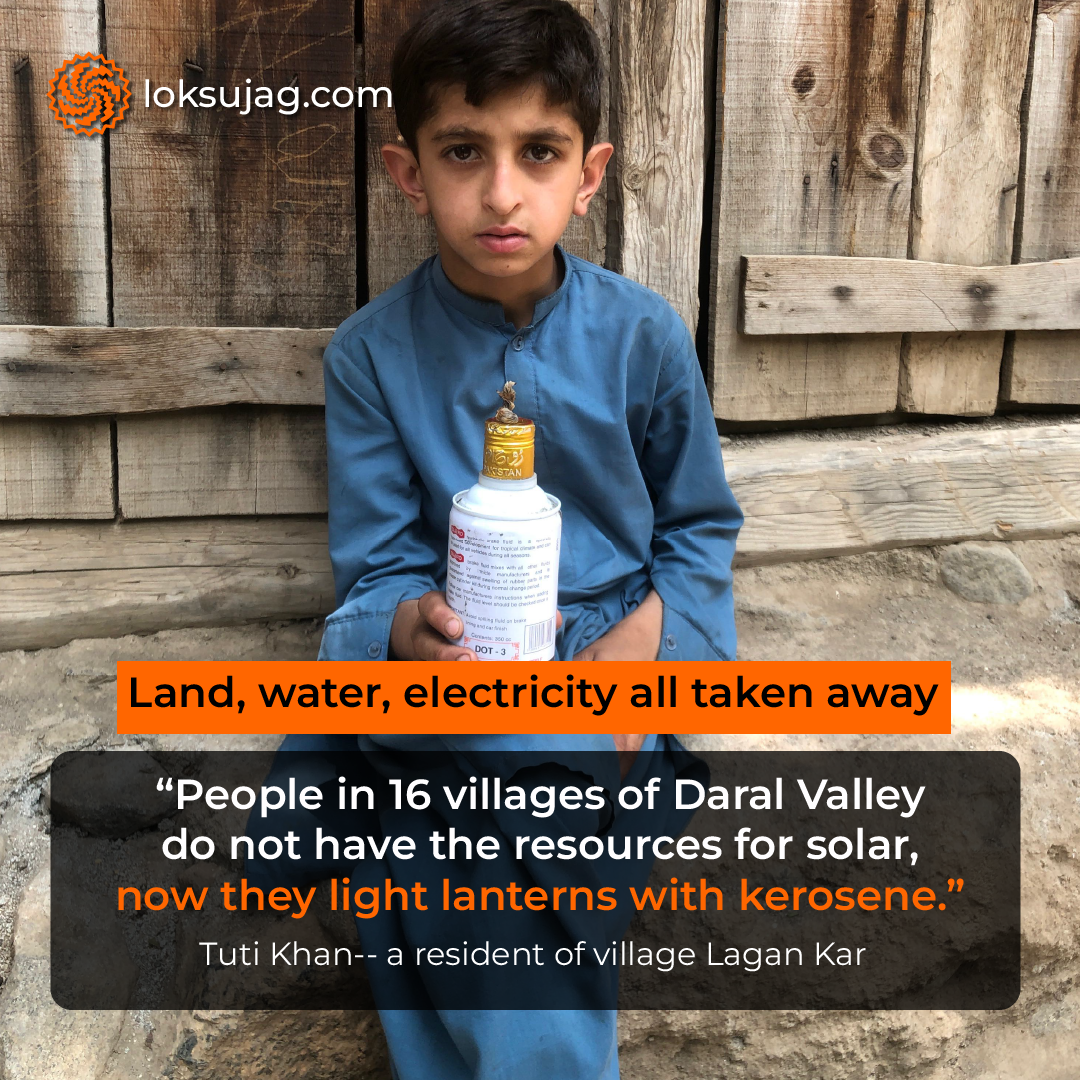
Daral Khwar project was completed in 2019
The Daral Khwar Hydropower was built by the Khyber Pakhtunkhwa government on the Daral, a tributary of the Swat River in Bahrain, which is connected to the national grid at the Madin Grid Station through a 132kV transmission line.
According to the Pakhtunkhwa Energy Development Organization (Pedo), this 36.6MW project, including the transmission line, was completed in 2019 at a cost of Rs8.49bn.
The commercial operation date (COD) of the plant is 26 May 2021, which provided 464GW electricity to the National Transmission and Dispatch Company until the financial year 2021-22. However, the flood in September 2022 severely damaged the project, suspending production, which was restored after 2.5 years at a cost of billions.
Water is available in the Daral River almost all year round, which used to flow into the Swat River in Bahrain city, but due to its diversion for the power project, its water now flows into the Swat River one kilometer downstream from the city. Tuti Khan and his colleagues say that the Daral River used to flood before too, but it destroyed everything in 2022.
After the tunnel was completed, some people restored their homes and fields to some extent, but this flood also washed them away. They also hold the Daral Khwar project responsible for this destruction, claiming that the water was stopped by closing the dam gates, which cut through the hill on the other side, wreaking havoc in the area.
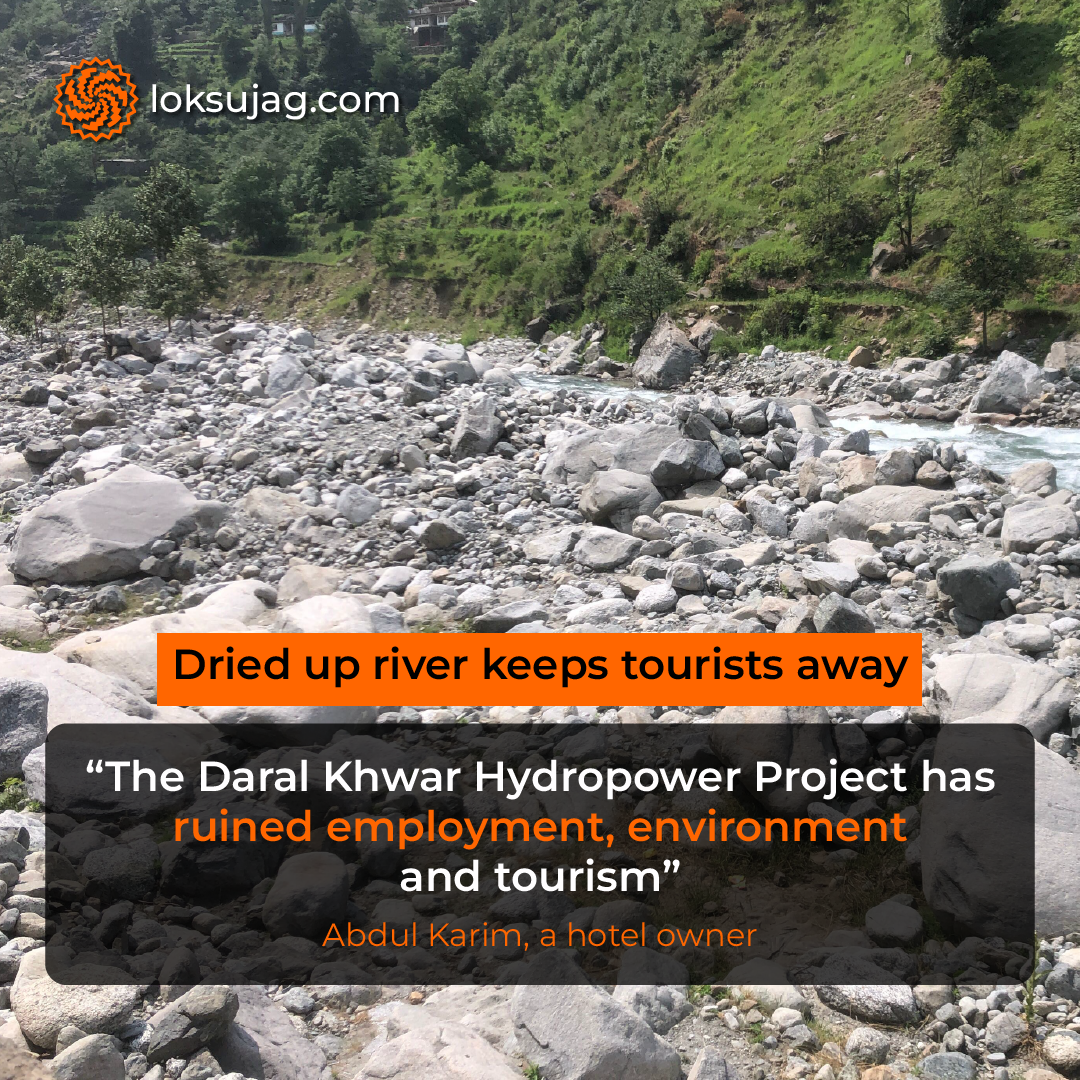
Missing details of environmental and social impacts
The first feasibility report of Daral Khwar was prepared by the Sarhad Hydro Development Organization (SHDO) in 1997. Later, a joint report was prepared for private investment in five hydro projects, including Daral Khwar, under the Power Policy 1998. This report only provided an estimate of the location, water flow, technical information, potential production and cost of the said project.
The same report was also submitted by Pedo to the Asian Development Bank, which in 2006 approved the Pakistan Renewable Energy Cooperation Project. It included eight sub-projects in KP and Punjab (including Daral). Although the bank had agreed to invest Rs7bn in the Daral Khwar project, this report also provided a superficial assessment of the environment and wildlife of the area.
No such official detailed study of the Daral Khor hydro project has come to light to date, which has assessed the potential (negative) social, economic and environmental impacts of the project on the local population.
The disadvantage of the lack of a detailed study on the Daral Dam was that in 2011, as a result of complaints and protests by the local people, the Asian Development Bank refused to provide financial assistance to the project.
Researcher and local social leader Zubair Torwali still maintains that at least 15,000 people have been directly affected by the Daral hydropower project, losing their agricultural lands, homes and tourism-related businesses.
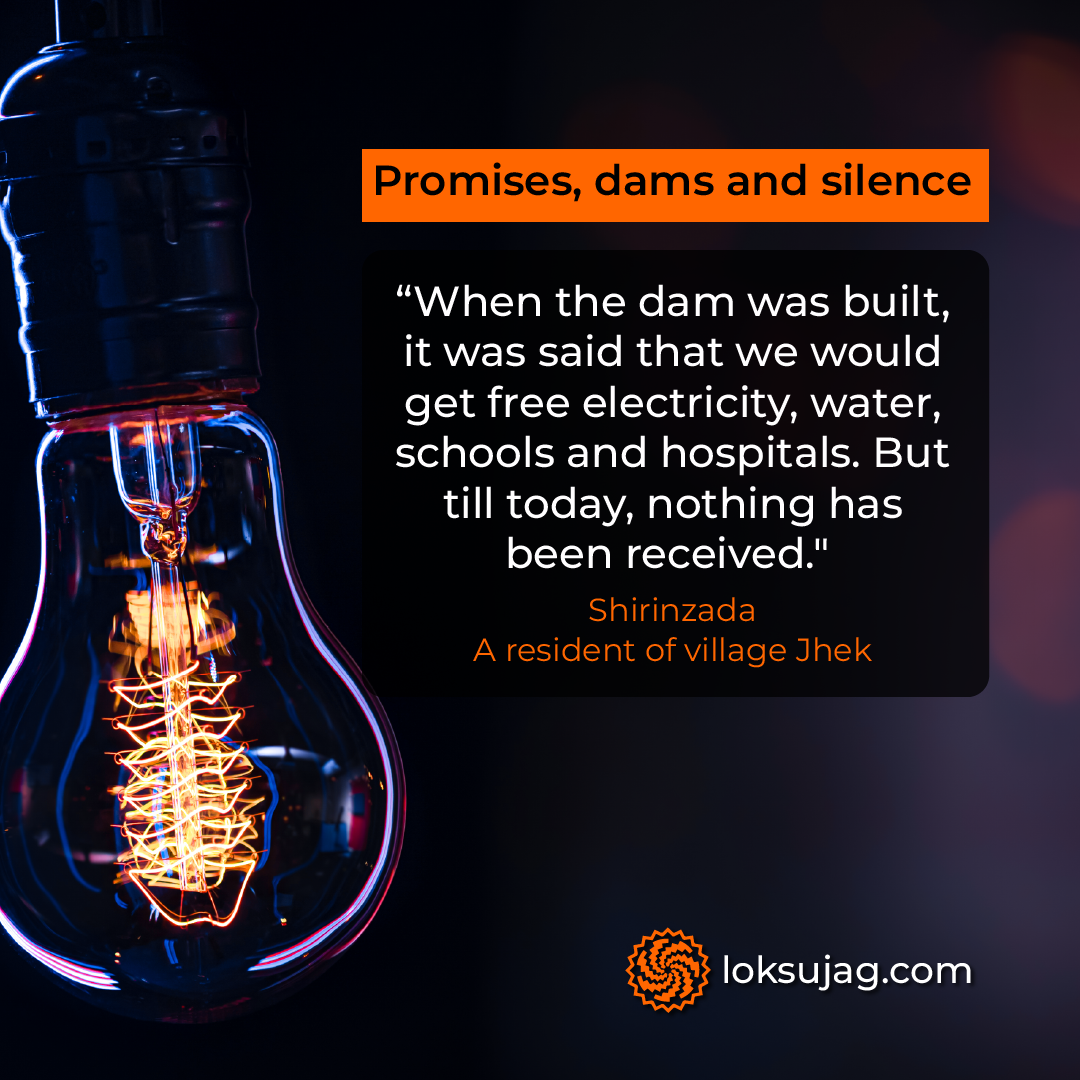
Compensation to some victims after court verdict
Official details of the compensation for the damages caused by the Daral Khwar Hydro Project, houses, trees, fields and land acquired for it have not been revealed till date. However, in a written response to the petition of some victims in the Peshawar High Court, Mingora Bench, the director of finance and administration of SHDO/Pedo had stated that Rs3.3 million were allocated for the victims earlier but after the court verdict, they were given Rs4.5m without.
Tuti Khan says that farmers of the villages of Poswar, Jheek, Lagankar, Upper Bir, Lower Bir, Lagan, Usha, Abyarin, Niyam, Doga, Jheel, Gunshu, Kambalai, Bahrain, Jinni and Jalba of Daral Valley have become unemployed.
“Look at the condition of this village, people here live in mud houses with sheet roofs. They have also been deprived of their water and hydroelectric plants, but the dam owners have not been able to supply electricity here.”
He says that all the people living in the valley have now installed small solar panels by spending Rs3000 to Rs10,000 each, according to their ability, with which they meet their electricity needs. Those who cannot buy solar panels still light tin lams using kerosene.
“After this project, the temperature has gone up, otherwise, we would never have needed a fan. I have been unemployed for two years, my son works in Saudi Arabia and sends some money. That’s how we make ends meet.”
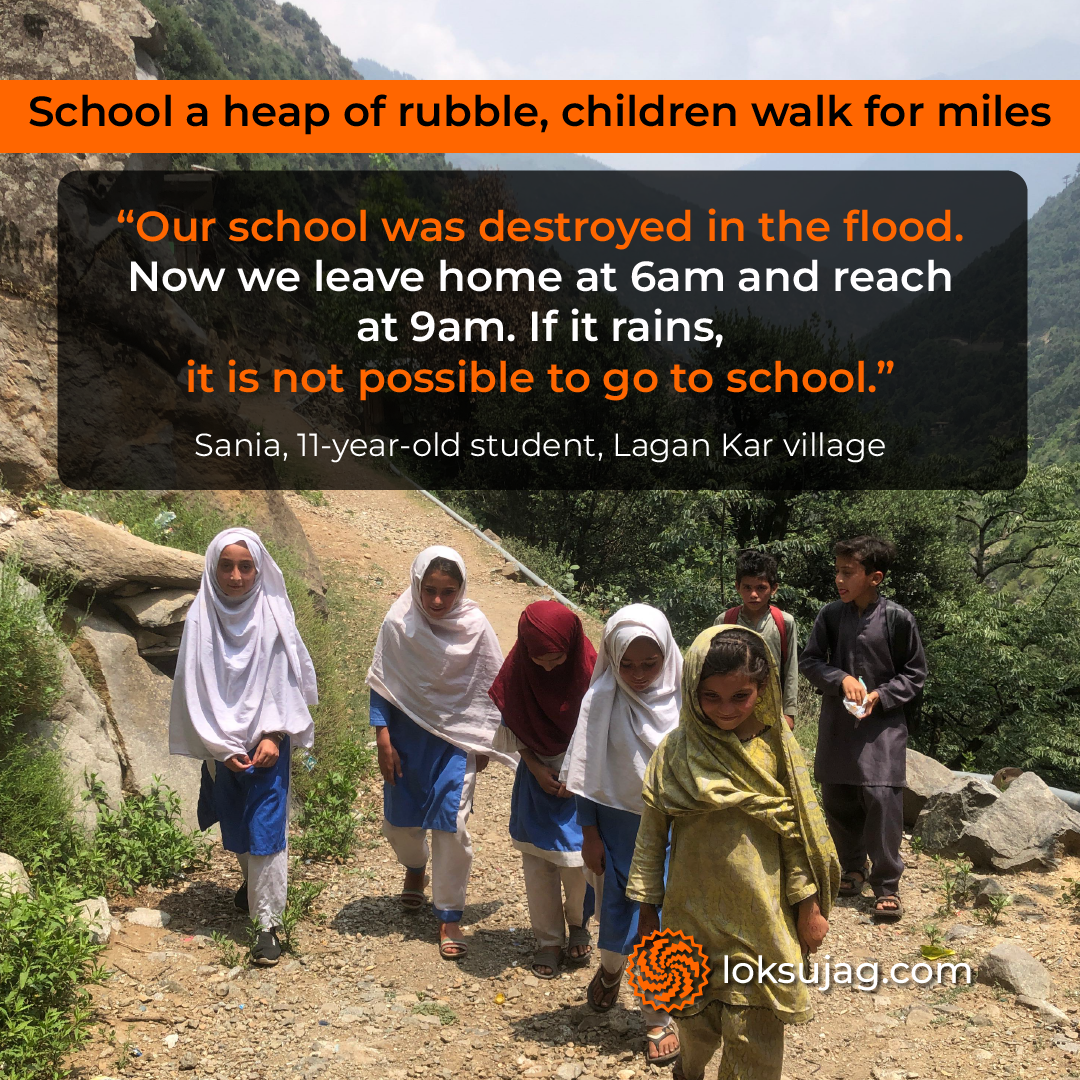
Dried up springs and unsafe drinking water
Sherinzada, a resident of village Jhek, was a farmer and the owner of a small orchard before the start of the hydropower project, but now he works as a daily wager. He says that before the dam was built, promises were made for provision of free electricity, a water supply scheme, a school and a hospital in his village, but nothing came of it.
“What can we do? We are helpless and cannot do anything in the face of the government’s oppression. Now we have to go to Poswar even to see the river, and it is very painful to see the dam there,” he laments.
Khanzada Khan, a resident of Jheel, a village near Bahrain Bazaar, says that the dam owners had promised that water would be released regularly on the old route of the Daral River passing through Bahrain, but that promise was not fulfilled.
“People on the top are disposing sewage there, which has made it impossible to pass by due to the stench. Daral Valley, which was famous in Bahrain for its cold, sweet springs, has got no springs left anymore as all of them have dried up. People from hotels in the market and many residential areas are forced to use unsafe water.”
He says that when the plan for the project came to light in 2011, local people protested against it and kept raising their concerns but in vain.
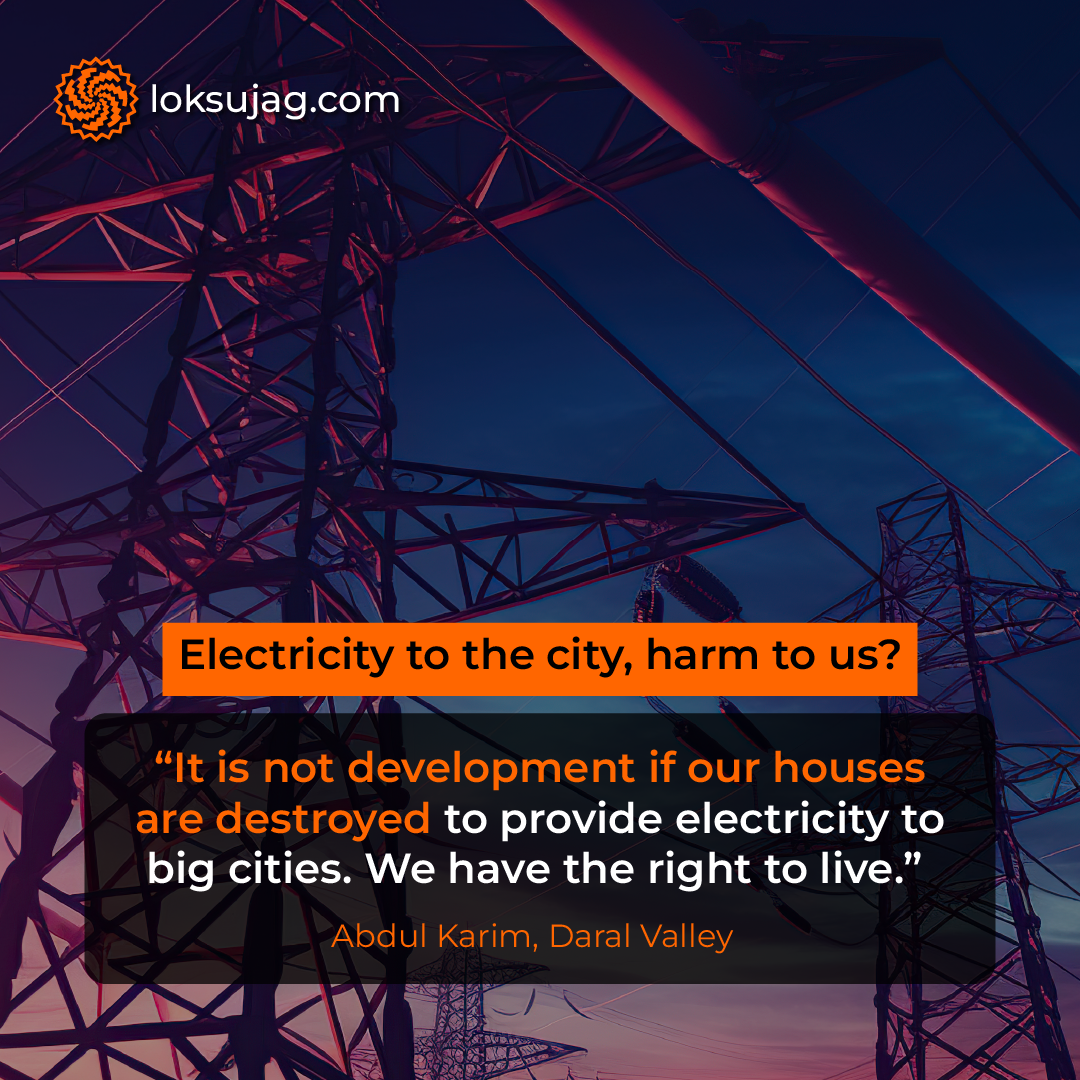
A tourist attraction turned into sewage dump
The non-government organization, Citizens for Clean Environment (CCE), had also demanded that the Supreme Court take suo motu notice of the Daral project. It said more than 30,000 people depended on the river and the project had created problems from them regarding drinking water, irrigation, environment and tourism business.
Abdul Karim who runs a hotel at the confluence of the Daral and Swat rivers finds no tourists in his hotel even during the peak season. He laments that there is a rush in hotels near the Swat River but no one is coming here due to the lack of water and presence stench in the Daral.
“The Daral project has ruined everything. The locals have lost their jobs, they are taking away their right to live. Destroying our businesses and providing electricity to big cities is not progress,” says Karim.
When Deputy Commissioner Swat Shahzad Mehboob was asked about the problems of the local people due to the Daral project, he, as usual, said that the government made development projects for the benefit of the people.
“The country is also benefiting from this project. Minor problems keep arising in such big projects. However, the provincial government can respond to these issues better. We are only playing the role of a bridge between the people and the government and we are trying to solve the problems of the people on a priority basis,” he claimed.
Read this
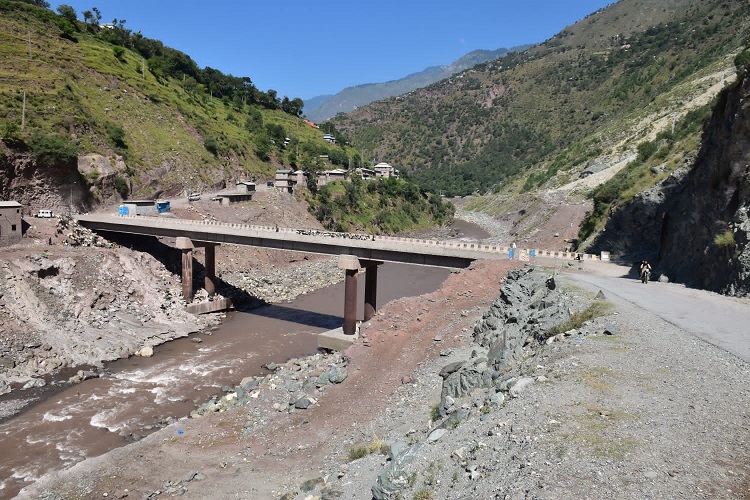
Neelum-Jhelum Hydroelectric Project: An ongoing saga of corruption and financial irregularities
Debris in place of the school
While talking to Tuti Khan and his friends in Lagankar village, two boys and three girls were seen returning from school.
Eleven-year-old Sania was earlier studying in the primary school in her village (Lagankar), but after the flood, she started going to the primary school in Lagan, several kilometers away. She says that she leaves home with her friends at 6am and reaches school at 9am.
Education is her passion and going to a far-off school is a compulsion because her school could not be restored after the flood. She says that due to the difficult path and the risk of landslides, no child in her village is able to go to school during the rains.
The Swat Education Department confirms that seven government schools in Daral Valley were damaged in the 2022 floods, including the Lagankar Primary School. The village now has the rubble of the destroyed school building, which has caused most of the children to drop out of school.
However, nine girls and only four boys travel dangerous routes to study in another village, Lagan.
Abdul Karim says that Daral Khwar project affected everything, including settlements, Bahrain city, farms, forests, environment, tourism and schools. Now it is heard that plans are being made to divert the Swat River for another power plant (Madyan Hydro Project) in Bahrain. If this happens, the livelihoods of the local people will be irreparably damaged along with the destruction of forests and the environment.
Published on 9 Jul 2025
